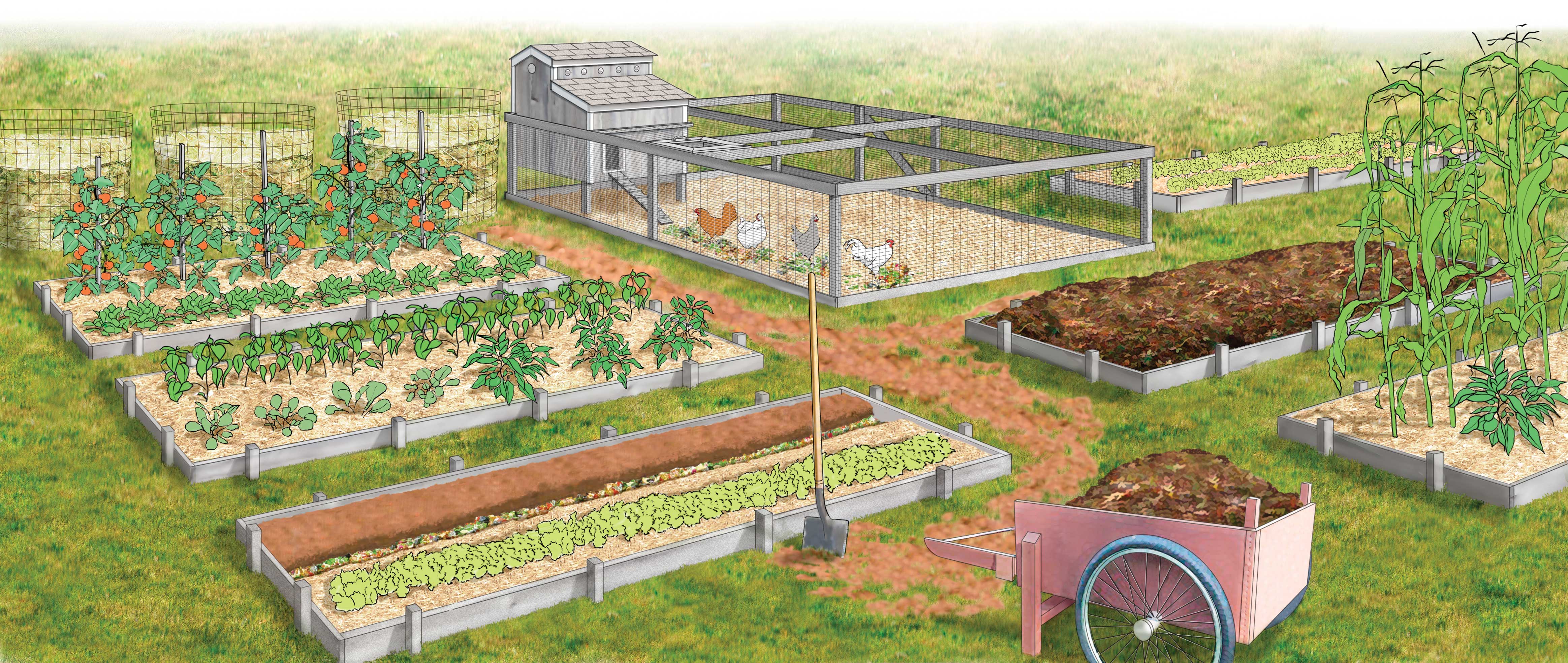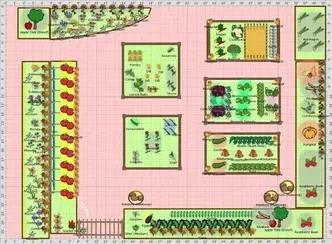Are you interested in creating a sustainable garden that not only benefits the environment but also enhances your overall well-being? Look no further than the Mother Earth Garden Planner. This comprehensive guide will provide you with all the necessary information and tools to plan, design, and maintain a successful and eco-friendly garden. With a focus on sustainability and natural practices, this planner will help you create a beautiful and harmonious space that supports the health of the planet and its inhabitants.
Benefits of a Sustainable Garden

Reducing Carbon Footprint
Creating a sustainable garden has a significant impact on reducing our carbon footprint. Traditional gardening methods often involve the use of chemical fertilizers, pesticides, and herbicides, which release harmful gases into the atmosphere and contribute to climate change. By using organic and natural gardening techniques, such as composting, crop rotation, and companion planting, we can minimize our reliance on these harmful chemicals and lessen our impact on the environment.
Composting
One of the easiest and most effective ways to reduce your carbon footprint is by composting. This process involves collecting organic waste from your kitchen and garden, then allowing it to decompose into nutrient-rich soil. By doing so, you divert waste from landfills and reduce the need for chemical fertilizers, which are energy-intensive to produce and transport.
Composting also improves soil health, making it more resilient and able to sequester carbon from the atmosphere. It also reduces methane emissions from landfills, a potent greenhouse gas that contributes to global warming.
Crop Rotation
Crop rotation is another essential practice in sustainable gardening. This method involves planting different types of crops in different areas each season to avoid depleting the soil’s nutrients. By rotating crops, you can maintain the soil’s fertility and reduce the need for synthetic fertilizers. It also helps prevent soil erosion, conserves water, and promotes healthy plant growth.
Companion Planting
Companion planting is the practice of growing different plants together to benefit each other. Plants that are grown in close proximity can help repel pests, attract beneficial insects, and improve soil health. For example, planting marigolds alongside vegetables can deter harmful insects, while planting legumes can fix nitrogen into the soil, benefiting neighboring plants.
Promoting Biodiversity
Sustainable gardening also plays a crucial role in promoting biodiversity. Traditional monoculture farming practices have led to a loss of biodiversity, where only a few species of crops dominate vast areas of land. This has detrimental effects on the ecosystem, such as soil degradation, loss of pollinators, and increased vulnerability to pests and diseases.
In contrast, sustainable gardening encourages diversity by incorporating a variety of plants, including native species, into the garden. This creates a more robust and resilient ecosystem, providing food and shelter for a wide range of wildlife.
Using Native Plants
Native plants are an essential component of a sustainable garden. They are well adapted to the local climate and require less maintenance, water, and fertilizer than non-native species. Native plants also provide a habitat for local wildlife, including pollinators, birds, and beneficial insects.
Creating Habitats
A sustainable garden should also include various habitats to support a diverse range of wildlife. These can include a birdhouse, birdbath, insect hotel, and a small pond. By providing these elements, you can attract different species to your garden and create a balanced ecosystem.
Improving Water Conservation
Water is a precious resource, and it’s vital to conserve it in our gardens. Traditional gardening practices, such as frequent watering and using sprinkler systems, can waste significant amounts of water. A sustainable garden, on the other hand, uses techniques that reduce water consumption and promote efficient use.
Mulching
Mulching is a simple but effective technique to conserve water in the garden. Adding a layer of mulch, such as shredded leaves or grass clippings, around plants helps retain moisture in the soil and prevents evaporation. Mulching also suppresses weeds, reducing the need for watering and weeding.
Drip Irrigation
Drip irrigation is another water-saving method that delivers water directly to the plant’s root zone, reducing waste from evaporation and runoff. It also provides more even watering, which promotes healthy plant growth and minimizes water stress.
Rainwater Harvesting
Collecting rainwater is another excellent way to conserve water in the garden. By installing a rain barrel or cistern, you can capture and store rainfall from your roof, which can then be used for watering plants during dry periods. This not only saves water but also reduces your water bill.
Planning Your Sustainable Garden

Assessing Your Space
Before beginning your sustainable garden, it’s essential to assess your space and determine what type of garden will work best for your needs. Consider factors such as sunlight, soil quality, and available space. You may choose to have a traditional in-ground garden, raised beds, or containers, depending on your specific requirements.
Choosing the Right Plants
Selecting the right plants for your garden is crucial for its success. When choosing plants, consider their sun, soil, and water requirements, as well as their compatibility with other plants. Native plants are always an excellent choice as they are low maintenance and provide numerous benefits to the ecosystem.
Designing for Efficiency
Design your garden for efficiency by grouping plants with similar water and nutrient needs together. This will not only save you time and resources but also promote healthier plants. You can also incorporate elements such as paths, trellises, and rain gardens into your design to maximize space and increase functionality.
Implementing Natural Pest Management
Pests are a natural part of any garden, but it’s important to manage them in a way that doesn’t harm the environment. Traditional chemical pesticides are harmful to beneficial insects and can pollute water sources. Instead, implement natural pest management techniques, such as handpicking pests, using physical barriers, and attracting beneficial insects.
Attracting Beneficial Insects
Beneficial insects, such as ladybugs, praying mantis, and lacewings, can help control pest populations in the garden. To attract these insects, plant flowers, herbs, and cover crops that provide nectar, pollen, and shelter. You can also purchase or make insect hotels, which provide a home for a variety of beneficial insects.
Physical Barriers
Physical barriers, such as row covers, netting, and floating row covers, can be used to protect plants from pests without the use of chemicals. These barriers create a physical barrier between plants and pests, preventing them from causing damage.
Maintaining Your Sustainable Garden
Proper maintenance is essential to keeping your sustainable garden thriving. This includes regular watering, weeding, and fertilizing. However, with sustainable gardening, you can minimize the need for maintenance by implementing practices that promote self-sufficiency and reduce the need for synthetic inputs.
Crop Rotation and Intercropping
As mentioned earlier, crop rotation and intercropping are vital to maintaining soil health and reducing the need for fertilizers. These practices also help prevent pests and diseases, minimizing the need for pesticides.
Collecting Seeds and Composting
Collecting seeds from your plants and composting garden waste is another way to achieve self-sufficiency in your garden. By collecting and saving seeds, you can grow new plants the following season without having to purchase new ones. Composting also provides a natural source of nutrients for your plants, reducing the need for synthetic fertilizers.
Frequently Asked Questions

What is the Mother Earth Garden Planner?
The Mother Earth Garden Planner is a comprehensive guide designed to help you create and maintain a sustainable garden. It provides information on various gardening techniques, such as composting, crop rotation, and companion planting, as well as tips for designing and maintaining a successful garden.
Is the Mother Earth Garden Planner suitable for all types of gardens?
Yes, the planner is suitable for any type of garden, whether it’s a traditional in-ground garden, raised beds, or containers. The techniques and principles outlined in the planner can be applied to any garden space.
Can I use the Mother Earth Garden Planner if I am new to gardening?
Absolutely! The planner is designed for both experienced and novice gardeners. It provides step-by-step guidance on everything from planning and design to maintenance and pest management.
Are sustainable gardens more work than traditional gardens?
Initially, creating a sustainable garden may require more effort and time compared to traditional methods. However, once established, sustainable gardens are generally lower maintenance, making them a more efficient and cost-effective option.
How can I get started with a sustainable garden?
To get started with a sustainable garden, assess your space, choose the right plants, and implement natural pest management techniques. You can also refer to the Mother Earth Garden Planner for more detailed information and resources.
Conclusion

Creating a sustainable garden is not just beneficial for the environment but also for our health and well-being. By following the principles of sustainability and implementing natural practices, we can create a beautiful and thriving garden that supports the health of the planet. Use the Mother Earth Garden Planner as your guide, and start your journey towards a more sustainable and harmonious garden today.


